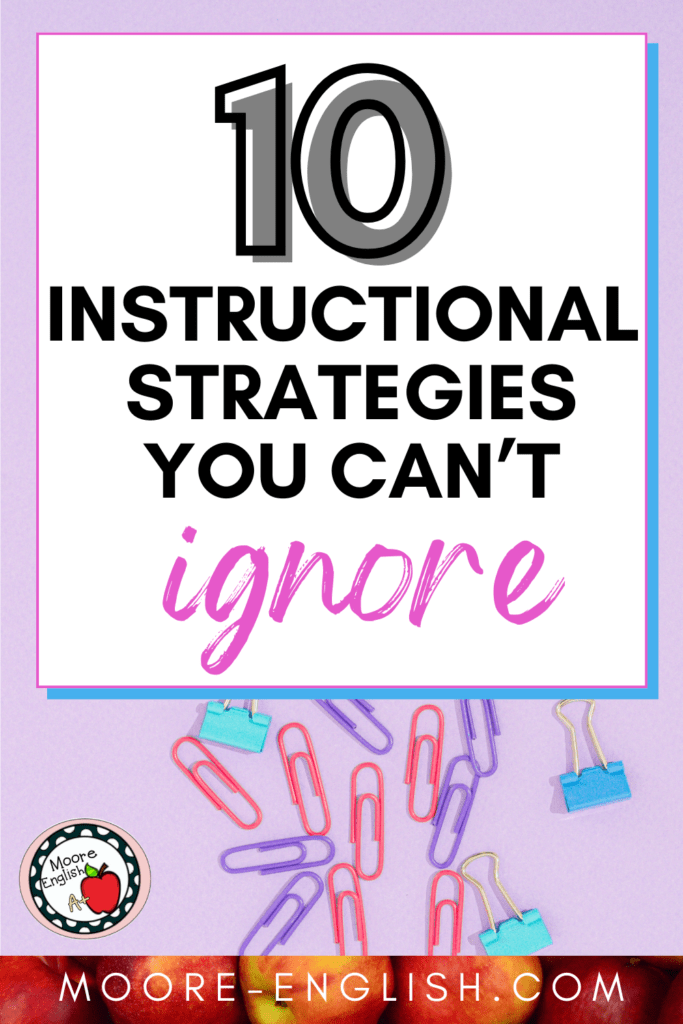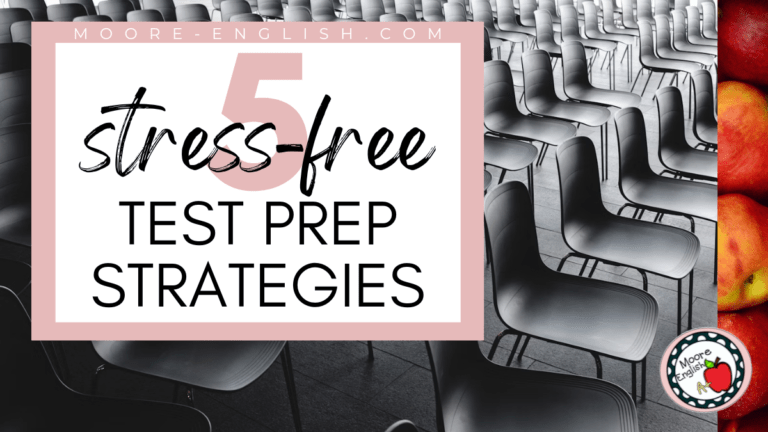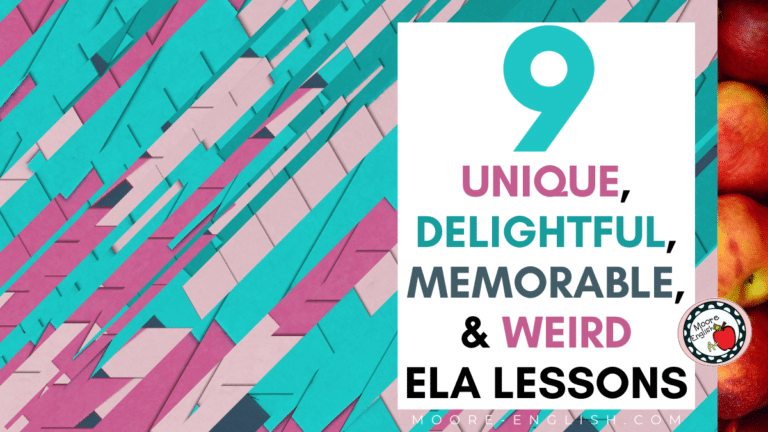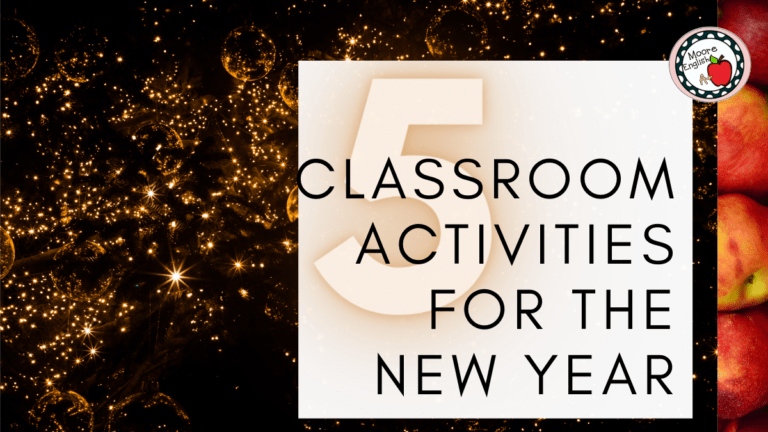I recently decluttered my Google Drive. I still had files from undergrad, including some of those fantastical ten-page lesson plans we were required to submit. For a laugh, I glanced through some of those lesson plans and instructional strategies.
As I read through the files, I was struck by my pre-service hubris. Oof. There was not an ounce of humility in those lessons. More than anything, I noticed how many top-tier instructional strategies I ignored or flatly rejected because I “knew better.”
In truth, some of the instructional strategies I tossed because they hadn’t suited my needs as a student. Others, I had turned aside because I didn’t have the classroom management skills to make them successful. So today, I want to address my youthful, willful, arrogant self because these are 10 instructional strategies you can’t ignore in high school ELA.
This post this post may contain affiliate links. Please read the Terms of Use.
You Can’t Ignore Scaffolding
Oh, boy! Those early lesson plans talk about Piaget and schema, but they include very little actual scaffolding. Now, after more than a decade in the classroom, I am very intentional about the scaffolds I use for each lesson. In particular, these are five scaffolding strategies you can’t ignore in high school ELA:
- First, pre-reading is the easiest scaffolding strategy, and it’s probably the one I use the most! I use these 4 simple steps to pre-read poetry and these steps to pre-read nonfiction.
- Similarly, pre-writing cannot be ignored! As a student, I always hated being asked to use specific brainstorming strategies, so as a new teacher, I quickly fell into the brainstorming trap. However, now I use this brainstorming menu to make sure that students engage in brainstorming.
- Using outlines was another pre-writing strategy I used to ignore. How foolish! My students always have stronger writing when we take time to outline, no matter how simply. This is also a good way to prepare students for our state assessment, which allows them to use scratch paper to outline.
- As a pre-service teacher, I always included bell work in my fantastical, nonsense lesson plans. However, upon reflection, I had a knack for choosing superficial bell work options. Instead, I should have chosen bell work strategies from this list so I could maximize scaffolding!
- Finally, visualizing is an easy, no-stress scaffold that you can add to any lesson. Instead of a traditional braindump, asking students to cook up a visualization is a great way to activate prior knowledge. They can draw plot, characters, settings! They can also visualize by creating graphic organizers.
Group Instructional Strategies
I am not a group work gal. I would almost always prefer to work independently, and that is often true for my students. However, some of my best work has actually been the result of collaboration. Students also benefit from dialogue. Plus, group instructional strategies help build classroom community and speaking and listening skills. These are three group instructional strategies you cannot ignore in ELA:
- Think-pair-share! This is a case of “I ignored it because I couldn’t manage it.” However, think-pair-share is a classic for a reason! Establishing expectations and norms is the key to managing think-pair-share, and that’s something I didn’t understand as an undergrad.
- Jigsaw groups were another strategy I didn’t know how to manage as an undergrad. I also think that jigsaw groups lend themselves best to specific types of content. They don’t work for everything, and as an undergrad, I often struggled to choose the right kind of work. However, jigsaw groups allow students to interact with a variety of peers while working toward a common goal, so they are an excellent instructional strategy.
- As an experienced teacher, I am also an advocate for inquiry-based learning. No shade to my undergrad program, but I was in the classroom for a few years before I understood inquiry-based learning. Now, it’s the focus of some of my most memorable classroom lessons!
Striking a Balance
One of the most challenging parts of teaching is striking a balance between using student data and relying on your expert instincts. For that resason, these are two more instructional strategies you can’t ignore!
First, student data is invaluable. It can provide both a holistic and individual perspective and can help you identify trends across classes, units, and years. Data can also be the foundation for meaningful conversations with your colleagues. I love data, so I have written a few different posts about it:
- How to Facilitate Data-Driven Student Conversations
- Are You Making these Mistakes in Data Analysis?
- How to Use Data to Fight Racism in Your School
- 3 Steps for Sharing Student Data with Parents
- How to Analyze Test Data in 6 Steps
- Using Data Professionally
However, using data should also be balanced with your expert instincts. Because “instinct” and “intuition” are often viewed as feminine skills, they are sometimes deirded. However, “instinct” and “intuition” are just pejorative terms for “expert experience.”
Oftentimes school leadership (re: men in power) can write off the expertise of women, but you know what you have done as a professional. You are an expert in your content area, grade level, or course. As a result, your choices will create and select the best instructional strategies for your students and classroom.














